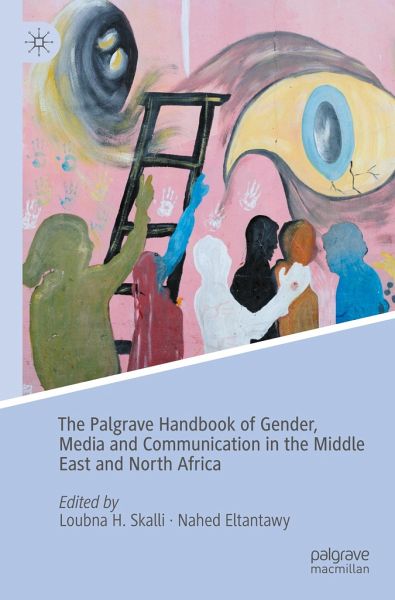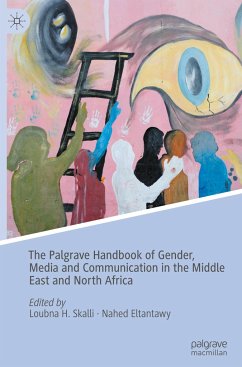
The Palgrave Handbook of Gender, Media and Communication in the Middle East and North Africa
Versandkostenfrei!
Versandfertig in 6-10 Tagen
166,99 €
inkl. MwSt.

PAYBACK Punkte
83 °P sammeln!
The Palgrave Handbook of Gender, Media and Communication in the Middle East and North Africa stands as an authoritative and up-to-date resource on the critical debates, research methods and ongoing reflections on how gender and communication intersect with the economic, social, political, and cultural fabrics of the countries in the MENA region. The Handbook comprises thirty-one chapters written by both established and rising scholars of gender, media, and digital technologies, and will rely on fresh data which seeks to capture the dynamic and complex realities of MENA societies, as well as th...
The Palgrave Handbook of Gender, Media and Communication in the Middle East and North Africa stands as an authoritative and up-to-date resource on the critical debates, research methods and ongoing reflections on how gender and communication intersect with the economic, social, political, and cultural fabrics of the countries in the MENA region. The Handbook comprises thirty-one chapters written by both established and rising scholars of gender, media, and digital technologies, and will rely on fresh data which seeks to capture the dynamic and complex realities of MENA societies, as well as the tensions and contradictions in the politics of gender and uses of communication technologies. The Handbook is split into six sections: Gender, Identities and Sexualities; The Gender of Politics; Gender and Activism; Gender-Based Violence; Gender and Entrepreneurship; and Gender in Expressive Cultures.












